Samsung Galaxy S26 vs Google Pixel 10 Pro: Main differences to expect

There are just a couple of months remaining until we see the Galaxy S26 series announced, but don't harbor too many hopes that the device will be drastically different from what we've already seen with the Galaxy S25… or the Galaxy S24… or the Galaxy S23. You get the drift.
Samsung is giving some upgrades, like better performance, a larger battery, and a slightly bigger screen to better compete against the iPhone 17 Pro and the Pixel 10 Pro.
The latter will be one of the bigger rivals to the Galaxy S26. With a similar price tag and sort of falls into that "compact pro" category in which the Galaxy S26 will reside.
Should you wait for the Galaxy 26, or are you pretty much set with your Pixel 10 Pro?
Galaxy S26 vs Pixel 10 Pro expected differences:
| Galaxy S26 | Pixel 10 Pro |
|---|---|
| Same flat design as Galaxy S25 | Similar design, same as the Pixel 9 Pro |
| Larger 6.3-inch display | Same 6.3-inch display |
| Much faster Snapdragon 8 Elite Gen 5 chipset | Humble Google Tensor G5 chipset |
| Triple camera with new 50MP ultrawide | Triple camera setup |
| 4,300 mAh battery | Larger 4,870 mAh battery |
| Qi2 support | Qi2 support, Pixelsnap |
Table of Contents:
Design and Size
All aluminum, all the time
The Galaxy S26 will grow in size and will accommodate a larger 6.3-inch display, a big change of heart in comparison with older Galaxies that had smaller 6.1-inch displays. But this display increase is pretty much in tune with what the rest of industry is doing right now, so it definitely isn't out of sync with Samsung's competitors.
Naturally, when a screen grows, it lifts every other dimension as well, and the Galaxy S26 will be growing in size, too. However, we don't expect any major changes to the build materials: Armor Aluminum for the frame and Gorilla Glass Victus 2 front and back are what you'll get.
| Galaxy S26 | Pixel 10 Pro |
|---|---|
| Thickness 7.24 mm | Thickness 8.6 mm |
| Dimensions 149.5 x 71.6 | Dimensions 152.8 x 72 |
| Weight - | Weight 207 grams |
The PIxel 10 Pro measures taller, wider, and thicker, and will most certainly be heavier than the Galaxy S26. Google's flagship also utilizes an aluminum frame with Gorilla Glass Victus 2 front and back, so it's not an inherently different device. Key here is the large camera strip at the rear, which will absolutely be more imposing than the sleeker camera cutout of the Galaxy S26.
Colors-wise, the Galaxy S26 is still a mystery at this point, but the Pixel 10 is available in Moonstone, Obsidian, Jade, or Porcelain colors.
Display Differences
Now, aside from the slight display increase for the Galaxy S26, we are not getting any other major changes to the specs, or at least no major ones have been leaked out yet. This means the tech on deck will be a Dynamic AMOLED 2X screen with up to 120 Hz screen refresh rate, HDR support, FHD+ resolution, and peak brightness hopefully above 2,600 nits.
We also hope that Samsung's anti-reflective screen tech trickles down from the Ultra down to the vanilla Galaxy, as it will be that much more useful when it comes to screen legibility. After all, the base iPhones have anti-glare coating, so it makes a lot of sense.
The Pixel 10 Pro, on the other hand, comes with a fairly similar display. The 6.4-inch Super Actua panel is also 120Hz-capable, with a little higher resolution (2856 x 1280 pixels), and has a pretty high peak brightness of 3,300 nits. If anything, it might very well retain its crown as the phone with the better screen.
| Galaxy S26 | Pixel 10 Pro |
|---|---|
| Size 6.3" | Size 6.3" |
| Brightness 2,600+ nits (peak) | Brightness 3300 nits (peak) |
We don't expect any changes in the biometrics: both will rely on ultrasonic fingerprint sensors.
Performance and Software
Sorry, Google
The Galaxy S26 will come in two flavors.
The US, Canada, and China will be treated to Qualcomm's Snapdragon 8 Elite Gen 5 for Galaxy chipset, a slightly tuned-up version sealed with a kiss for Samsung.
The rest of the world will likely get the Exynos 2600 chipset, which could be built on a 2nm manufacturing process, a new record when it comes to miniaturization and, therefore, efficiency.
Point is, regardless of which chipset you get, one thing is for certain: the Galaxy S26 will smoke the Pixel 10 Pro in raw power and performance.
Google's flagship isn't really a performance monster, and it actually doesn't pretend it is. The on-board Tensor provides you with just the right amount of power to ensure smooth day-to-day operations without having much in excess, which should be enough for most users. It's a chip tailored for AI, after all.
| Galaxy S26 | Pixel 10 Pro |
|---|---|
| Chip Google Tensor G5 | Chip Qualcomm Snapdragon 8 Elite |
| Process 3nm | Process 3nm |
| RAM, Storage 16/256GB 16/512GB LPDDR5X RAM UFS 4.0 storage | RAM, Storage 12/128GB 12/256GB LPDDR5X RAM UFS 3.1 storage |
In terms of memory, we expect both to share another common hardware feature, which could be 16GB of memory. That would be an increase for the Galaxy, which previously came with 12GB of RAM, but more of the stuff comes in indispensable for on-device AI computations.
Android 16 will be the latest flavor of Google's OS by the time the Galaxy S26 launches, and the phone will likely come with an even newer flavor of One UI, with some extra new features on board.
Both the Pixel and the Galaxy enjoy seven years of software support.
Camera
Triple cameras, but which one will come up on top?
The Galaxy S26 will finally score an important upgrade!
After years of being stuck with a 12MP ultrawide, it will get a 50MP ultrawide camera, a pretty decent improvement. The main camera will also be a 50MP one, and sadly, the telephoto is stuck at 10MP for now, with 3X optical zoom. Probably the year after, eh, Samsung?
The Pixel 10 Pro comes with a more intriguing camera system, one that employs a 50MP main camera, a 48MP ultrawide, and a 48MP telephoto with 5X optical zoom which allows zooming up to 100X.
On paper, this one is superior to the camera that Samsung might use, but real-life differences usually pile up at a faster and often unforeseeable rate, so the Galaxy might turn out to be the better camera phone, who knows.
| Galaxy S26 | Pixel 10 Pro |
|---|---|
| Main 50 MP, f/1.8 24 mm 1/1.56" | Main 50 MP, f/1.1 1/1.3" |
| Ultrawide 50 MP 13 mm | Ultrawide 48 MP, f/1.7 1/2.55" |
| Telephoto 10 MP, f/2.4 3X zoom 1/3.94" | Telephoto 48MP MP, f/2.8 5X zoom 1/2.55" |
Battery Life and Charging
It's either way here
The Galaxy S26 is getting a larger 4,300 mAh battery, some 300 mAh bigger than the one on the Galaxy S25. That's a welcome, albeit not such a major increase to raise our hopes about better battery life too much. Hopefully, the chips on board play well in terms of efficiency so that we get better battery life out of the on-board cell.
| Galaxy S26 | Pixel 10 Pro |
|---|---|
| Battery size 4,300 mAh | Battery size 4,870 mAh |
Charging speeds 25 Wwired 15 W wireless charging | Charging speeds 30W wired 15W wireless charging Pixelsnap support |
Another area in which the Galaxy will be a sore loser could be charging, where it's expected to retain the old 25 W wired charging. Boring. In a world where even iPhones score faster charging with pretty much every generation and we also have phones which have been capable of charging at 100 W or more for years, launching a phone with 25 W wired charging is not cool at all.
The Pixel 10 Pro charges at 30W, and while that's not too fast either, it's still faster.
The Galaxy S26 could score Qi2 magnets at the back, which would allow you to snap on MagSafe or other compatible accessories. That's what the Pixel comes with: the Pixelsnap system lets you attach supported accessories magnetically.
Specs Comparison
|
|
|
| Samsung Galaxy S26 | Google Pixel 10 Pro |
Design
| Dimensions | |
|---|---|
| 152.8 x 72 x 8.6 mm | |
| Weight | |
| 207.0 g | |
Display
| Size | |
|---|---|
| 6.2-inch | 6.3-inch |
| Type | |
| Dynamic AMOLED, 120Hz | OLED, 120Hz |
Hardware
| System chip | |
|---|---|
| Snapdragon (3 nm) | Google Tensor G5 (3 nm) |
| Memory | |
| 12GB (LPDDR5X)/128GB (UFS 4.0) 12GB/256GB 12GB/512GB |
16GB (LPDDR5X)/128GB (UFS 3.1) 16GB/256GB 16GB/512GB 16GB/1TB |
Battery
| Type | |
|---|---|
| 4000 mAh | 4870 mAh |
| Charge speed | |
| Wired: 25.0W Wireless: 15.0W | Wired: 30.0W Wireless: 15.0W |
Camera
| Main camera | |
|---|---|
| 50 MP (OIS, PDAF) Sensor name: Samsung GN3 Aperture size: F1.8 Focal length: 24 mm Sensor size: 1/1.56" Pixel size: 1.0 μm |
50 MP (OIS, PDAF) Aperture size: F1.7 Sensor size: 1/1.3" |
| Second camera | |
| 12 MP (Ultra-wide) Sensor name: Sony IMX564 Aperture size: F2.2 Focal Length: 13 mm Sensor size: 1/2.55" Pixel size: 1.4 μm |
48 MP (Ultra-wide) Aperture size: F1.7 Sensor size: 1/2.55" |
| Third camera | |
| 10 MP (Telephoto) Sensor name: Samsung S5K3K1 Optical zoom: 3.0x Aperture size: F2.4 Focal Length: 67 mm Sensor size: 1/3.94" Pixel size: 1.0 μm |
48 MP (Telephoto) Optical zoom: 5.0x Aperture size: F2.8 Sensor size: 1/2.55" |
| Front | |
| 12 MP (HDR) | 42 MP (PDAF) |
See the full
Samsung Galaxy S26 vs Google Pixel 10 Pro specs comparison
or compare them to other phones using our
Phone Comparison tool
Summary
The Galaxy S26 is shaping up to be a larger, meaner, and better-performing flagship phone, but so is the Pixel 10 Pro.
Once the Galaxy launches, the Pixel will have been out for a couple of months already, accruing loyal users, and so far, it seems like the Galaxy S26 could potentially sway some over to the Samsung side.
We'd definitely get better performance, potentially better battery life, and likely a camera that's at least as good as the one on the Pixel.
On the other hand, those who enjoy Google's achievements in the AI sphere will hardly find a better phone to spend their money on apart from the Pixel 10 Pro.
Follow us on Google News


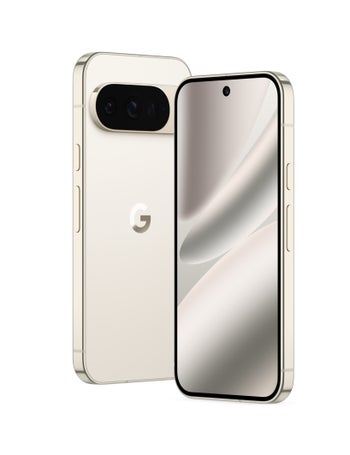


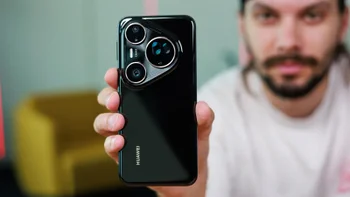
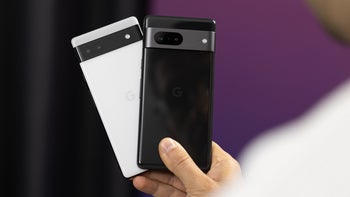



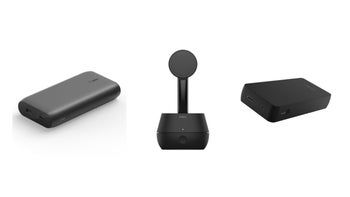



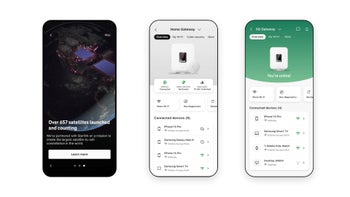
Things that are NOT allowed:
To help keep our community safe and free from spam, we apply temporary limits to newly created accounts: